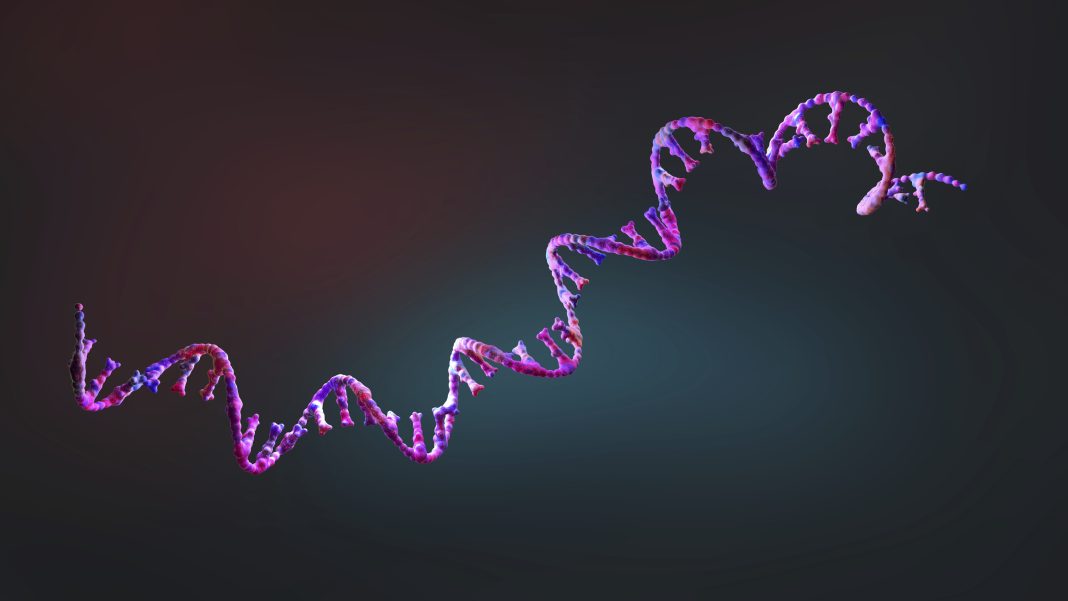CRISPR–Cas13—a class 2 type VI RNA endonuclease with two higher eukaryotes and prokaryotes nucleotide-binding (HEPN) domains for RNA cleavage—targets and degrades RNA. The RNA targeting has been used widely for the cleavage of RNAs in yeast, plants, flies, zebrafish, and mammals. It has also been harnessed for assays that detect the presence of nucleic acids.
Now, researchers have developed a rapid and sensitive dual-fluorescence reporter system that detects collateral effects. In doing so, they found that Cas13 could induce substantial collateral effects in HEK293T cells. In addition, they used the system to test newly engineered variants, revealing high-fidelity Cas13 (hfCas13) variants that markedly reduce off-target effects.
The study, published in Nature Biotechnology in the paper, “High-fidelity Cas13 variants for targeted RNA degradation with minimal collateral effects,” demonstrates the feasibility of hfCas13 for efficient on-target RNA degradation with almost no collateral damage in mammalian cells and animals.
Concerns have been raised over the off-targeting effects of Cas13. Previous structural studies have suggested that when Cas13 binds to target RNA, the two HEPN nuclease domains may form a catalytic site on the protein surface, thus creating the potential for promiscuous cleavage of bystander RNA apart from on-target cleavage of target RNA.
Due to this collateral effect, Cas13 may degrade both target and non-target RNA at random, thus making it difficult to design experiments and interpret results.
In this study, researchers designed a dual-fluorescent reporter (EGFP and mCherry) plasmid system to detect the collateral effects of Cas13 in mammalian cells. In this system, loss of mCherry fluorescent cells was interpreted as successful on-target editing; loss of EGFP fluorescent cells was interpreted as off-target cleavage. Among over 200 engineered variants, several Cas13 variants (including Cas13d and Cas13X) exhibited efficient on-target activity but markedly reduced collateral activity.

The team designed and generated a mutagenesis library of Cas13d variants and individually transfected them into HEK293 cells. By analyzing reporter fluorescence using flow cytometry, five variants (N1V7, N2V7, N2V8, N3V7, and N15V4) exhibited a relatively low percentage of EGFP+ cells but a high percentage of mCherry+ cells, indicating high on-target activity with reduced collateral activity.
The variant N2V8, a high-fidelity Cas13d (hfCas13d) due to its high specificity for RNA degradation, was used for further characterization including transcriptome-wide off-target analysis using RNA sequencing. The hfCas13d showed a marked reduction in the number of off-target genes when targeting several endogenous transcripts, such as PPIA. Moreover, hfCas13 variants showed no detectable collateral damage to cell lines, transgenic animals, and somatic cells, thus supporting their in vivo application.
This same team identified the CRISPR-Cas13X system in 2021, the smallest (only 775 amino acids) RNA editing tool known to date. In their new study, the researchers, led by Yang Hui, PhD, of the Institute of Neuroscience, Chinese Academy of Sciences and an R&D team from HuiGene Therapeutics, further engineered Cas13X and obtained the hfCas13X variant, which exhibits high specificity of on-target RNA degradation but minimal collateral effects. hfCas13X shows great application potential in the field of gene therapy based on RNA editing. The Cas13 variants identified in this study could be more useful, in the future, in RNA editing and therapeutic applications.


